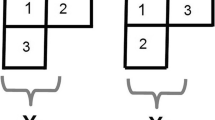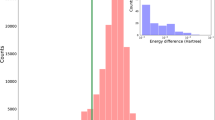Abstract
THE crystal structure of 9 :10-dimethyl-1 : 2-benzanthracene (DMBA) was determined by Sayre and Friedlander1 and they refined the atomic co-ordinates by means of the method of three-dimensional least-squares with isotropic thermal parameters. They found that the molecule was far from planar, and in particular the benzene ring (Fig. 1, ring D) was inclined to the mean plane at approximately 20°. (The crystals are orthorhombic with a = 7.62, b = 8.62, c = 21.11 Å; space group P21nb; 4 mol. per unit cell.)
This is a preview of subscription content, access via your institution
Access options
Subscribe to this journal
Receive 51 print issues and online access
$199.00 per year
only $3.90 per issue
Buy this article
- Purchase on Springer Link
- Instant access to full article PDF
Prices may be subject to local taxes which are calculated during checkout
Similar content being viewed by others
References
Sayre, D., and Friedlander, P. H., Nature, 187, 139 (1960).
Author information
Authors and Affiliations
Rights and permissions
About this article
Cite this article
IBALL, J. A Refinement of the Structure of 9:10-Dimethyl-1:2-benzanthracene. Nature 201, 916–917 (1964). https://doi.org/10.1038/201916b0
Issue Date:
DOI: https://doi.org/10.1038/201916b0
This article is cited by
-
Uptake of Hydrocarbon Carcinogens by Lysosomes
Nature (1964)
Comments
By submitting a comment you agree to abide by our Terms and Community Guidelines. If you find something abusive or that does not comply with our terms or guidelines please flag it as inappropriate.



